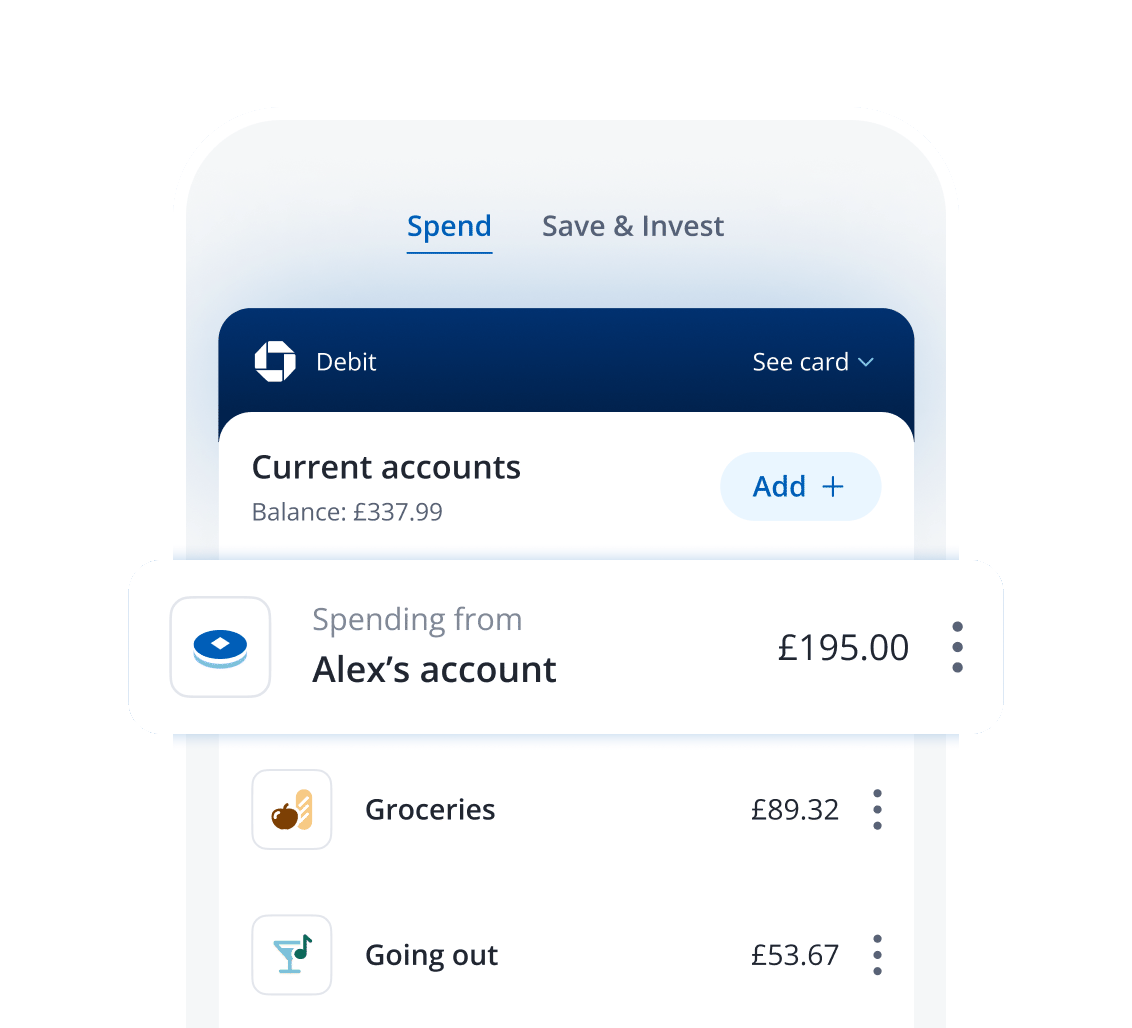ISAs can offer a smart way to save or invest. Here’s how
8 min | 17 January 2025

It's never too late to get on top of your long-term savings, and an individual savings account (ISA) can be one of the easiest ways of doing more with your money. But what exactly is an ISA, and with all the different types out there, which ones could be right for you?
An ISA is a type of account that offers an efficient way to save or invest because you won’t pay tax on any interest or investment growth. For example, you can choose a cash ISA or a stocks and shares ISA, which can be invested in a wide range of shares, funds, bonds and other types of investments. Investments should be seen as something for the medium to long term, and although you can generally withdraw your money at any time, you should seek to invest for at least five to six years. Some types of ISAs are also bound by rules imposed by HMRC on when you can withdraw money too. The value of investments can go down as well as up, and you may not get as back as much as you invested.
There are limits to the amount of money you can put into your ISAs each tax year – in the 2024/25 tax year, it’s £20,000 for an adult. This limit applies as a total across all ISA products, excluding Junior ISAs (JISAs). For example, if you put £4,000 in a Lifetime ISA (LISA), you are left with £16,000 to go into a cash ISA and/or stocks and shares ISA in that tax year.
Why consider having an ISA?
The reason this type of account is worth considering is that the contribution amounts are cumulative, so if you're lucky enough to be able to use the full ISA allowance each year for say, three years, that £60,000 is saved/invested and any increase from interest or investment growth usually remains within the ISA and receives further interest or potential investment growth, subject to market movement. Even if you can't afford to use your full ISA allowance but can put aside £1,000 a year, over time, these amounts add up. Only put in what you won't miss – if that £1,000 is the difference between paying for any of your living expenses or not, pay the bills first.
The right ISA for you depends on what you’re after. You might find a combination of more than one type works best. Depending on your provider, you can often specify socially responsible investments as part of your stocks and shares ISA. Socially responsible investments may take into consideration environmental and social factors in the investment strategy.
New rules mean you now have the flexibility to pay into multiple ISAs of the same type in a single tax year – providing you don’t go over the maximum annual contribution allowances. You can also transfer all or just some of the money from an ISA to a different provider, as well as amalgamate ISAs taken out in previous years. Here’s a rundown of the main types:
1. Cash ISA (annual limit: £20,000)
A cash ISA is relatively easy to understand, because it’s similar to a normal savings account (except you don’t pay tax on any interest you might earn in an ISA).
Your £20,000 allowance is only good for one tax year. If you don’t use all of it you can’t carry it over to the following year.
From April 2024, a new 18+ age rule will apply which means you’ll need to be 18 or older to open an adult cash ISA (compared to the previous age requirement of 16+).
2. Stocks and shares ISA (annual limit: £20,000)
This one's a little more complex than the cash ISA because your money is invested. It does come with some higher risks than a cash ISA, but with the greater chance of higher returns. You can transfer money from a cash ISA into a stocks and shares ISA, but check with your provider for any restrictions they may have on transferring ISAs, or any charges they may apply.
You can invest in a wide range of shares, bonds and funds. This is subject to the same overall £20,000 annual ISA limit as the cash ISA and any investment growth you make is tax-free. Bear in mind you’ll usually pay some fees with this type of ISA.
3. Lifetime ISA (annual limit: £4,000)
A Lifetime ISA (LISA) can be ideal if you’re saving for your first home (the property will need to cost £450k or less and you'll need to be buying with a mortgage at least 12 months after you make your first payment into the LISA) or for retirement. You have to be between 18 and 39 years of age when you open one and the government will give you a bonus of 25% on any deposits made in that tax year (up to a maximum of £1,000 per year) until you’re 50. You can take the amount you’ve built as a tax-free lump sum when you reach 60 if you don’t end up using it towards a home. If you withdraw before you’re 60 and don’t use it to buy a house, you’ll pay a 25% penalty on the full amount you are withdrawing, so you could get back less than your original deposit.
If you choose to opt out of your workplace pension to pay into a Lifetime ISA, you may lose the benefits of the employer-matched contributions. Your current and future entitlement to means-tested benefits may also be affected.
You can withdraw money from your LISA if you’re:
- buying your first home
- aged 60 or over
- terminally ill, with less than 12 months to live
4. Innovative finance ISA (annual limit: £20,000)
If you’re ready to take some risks, an innovative finance ISA (IFISA) uses your money to lend to borrowers or businesses (known as ‘peer-to-peer’ lending). The borrower then pays back the money you’ve invested at a rate that’s generally higher than you’d get with your regular bank. The downside is the risk of the borrower's inability to pay back their loan, meaning you may not get back what you put in. There’s also no protection from the Financial Services Compensation Scheme if you do lose money. Please note that this is a high-risk investment. People should not invest in them unless they are prepared to lose money.
5. Junior ISA (annual limit: £9,000)
A Junior ISA (JISA) can be a great way to save for children aged under 18 (when they turn 18, the JISA can be converted to an adult ISA, or the cash can be withdrawn). There are cash JISAs or a stocks and shares option, and they can be opened either by parents, or guardians with parental responsibilities. Children aged 16 and 17 can open their own JISA but can no longer open an adult cash ISA until they are 18. Cash JISAs also tend to come with higher interest rates than adult ISAs, but some restrictions apply (for example, you can only have one at any one time with any provider). And if you’re contributing to someone’s JISA, it won’t affect your own personal ISA allowance as any contributions are a gift and the child is the beneficial owner. Please remember that funds can only be withdrawn by the child, and only after they turn 18.
Lapsing ISAs
New rules introduced for the 2024/25 tax year mean savers and investors no longer have to worry about their ISAs lapsing. Previously, if you didn’t pay in any money during the previous tax year then you had to “reapply” for your ISA. However, ISAs will no longer lapse, regardless of whether there is a break in subscriptions or not.
Four ways to help make the most of your ISA
- If you have a cash ISA, consider saving into your ISA at the start of the tax year if you can – that way your cash will benefit from the time and tax advantages straight away
- You might want to consider a stocks and shares ISA. These can give you the chance to earn a higher rate over the long term, but remember, they are more risky, and you could get back less than you initially invested
- Whichever option you go for – if you can afford to – try to use your full allowance every year, and not make any withdrawals
- Think about whether putting your annual allowance into different types of ISAs could be a good option
Putting your spare cash in an ISA and making the most of the tax breaks can help you plan for the future, whether it’s for your children’s education or your retirement nest egg.
Introducing Nutmeg
Introducing Nutmeg, the digital wealth manager that's part of the Chase family. You can now open an ISA account with Nutmeg and keep an eye on your investments from the Chase app – so you can see everything in one place.
Nutmeg is authorised and regulated by the FCA in relation to certain investment services and restricted advice only. Chase is a trading name of J.P. Morgan Europe Limited. Nutmeg and J.P. Morgan Europe Limited are J.P. Morgan companies. Products provided by Nutmeg are not guaranteed by Chase. Before applying, you should consider if a Nutmeg account and its features are suitable for you and your investment needs.
Disclaimer: The Hub is intended as a knowledge portal to provide information on a range of topics, including financial products and lifestyle management. Articles may reference products and services which Chase UK does not currently offer. This article is for information only and does not constitute financial advice. Tax treatment depends on your individual circumstances and may be subject to change. We do not offer any tax advice.






